 |
 |
 |
| |
Risk Behavior--and Sex Partner Type--Predict PrEP Adherence in MSM
|
| |
| |
IDWeek2017/IDSA, October 4-8, 2017, San Diego
Mark Mascolini
US men who have sex with men (MSM) took their preexposure prophylaxis (PrEP) pills less steadily if they had no partner or a single HIV-negative partner in a California demonstration project [1]. Higher sexual risk behavior predicted better PrEP adherence.
Previous research confirms that MSM who take more sexual risks--like having sex without a condom--adhere better to PrEP than lower risk-takers. But no work has assessed the impact of partnership type on PrEP adherence. And both sexual risk and partnership type may change over time.
To address these issues, CCTG 595 trial researchers determined tenofovir/emtricitabine adherence by measuring intracellular tenofovir diphosphate (TFV-DP) levels at weeks 12 and 48 in men enrolled in a this 48-week California PrEP adherence trial. Men self-reported one of three types of partnership type at baseline and at weeks 24 and 48: (1) no partner or a single HIV-negative partner, (2) a single HIV-positive partner, or (3) multiple partners of any serostatus in the past 3 months. For each man, the researchers calculated a sexual risk score (CalcR), which considers several variables including insertive or receptive risk, numbers of insertive or receptive anal acts, and sexually transmitted infections in the past month. They ranked risk behavior as low (less than 0.12), moderate (0.12 to 0.59), high (0.6 to 5.9), and very high (above 5.9).
The analysis involved 395 MSM and 3 transgender women averaging 35 years in age. While 74% of participants were white, 30% were Hispanic, 13% black, 8% multiple races/other, and 3% Asian. Most participants, 91%, had more than a high-school education, and two thirds had a monthly household income above $2000.
Sexual risk score did not change significantly through 48 weeks, but partnership type did. Proportions of participants with low, moderate, and high sexual risks at week 0 were 44%, 27%, and 28%. By week 48 proportions with low, moderate, and high risks shifted only slightly to 42%, 24%, and 34% (P = 0.246). At week 0 proportions with no partner or a single HIV-negative partner, with a single HIV-positive partner, and with multiple partners were 1%, 12%, and 88%. At week 48 those proportions were 9%, 9%, and 81%, a significant shift (P < 0.001).
In univariate analysis both sexual risk score and partnership type predicted adherence level. Study participants with a moderate or high risk score had higher adherence than low-risk participants at week 48 (P = 0.018). And participants with no or a single HIV-negative partner had lower adherence than participants with the other partnership types at week 48 (P = 0.007). But multivariate linear regression determined that only partnership type predicted adherence at week 48: Participants with no partner or a single negative partner had lower TFV-DP levels than those with multiple partners (mean difference -344 fmol/punch, 95% confidence interval -617 to -71, P = 0.014).
The researchers concluded that, while partnership type shifted toward lower-risk partnerships, measured risk behavior remained flat over time. People with higher risk behaviors and more risky partnerships maintained high TFV-DP levels at study week 48, a result "suggesting a maintained strong motivation for PrEP adherence in these individuals." The investigators proposed that both recent sexual risk behavior and sex partner type may be good predictors of PrEP adherence in MSM.
Reference
1. Blumenthal J, Jain S, Dube M, et al. Recent HIV risk behavior and partnership type predict PrEP adherence in men who have sex with men. IDWeek2017/IDSA. October 4-8, 2017. San Diego. Abstract 882.
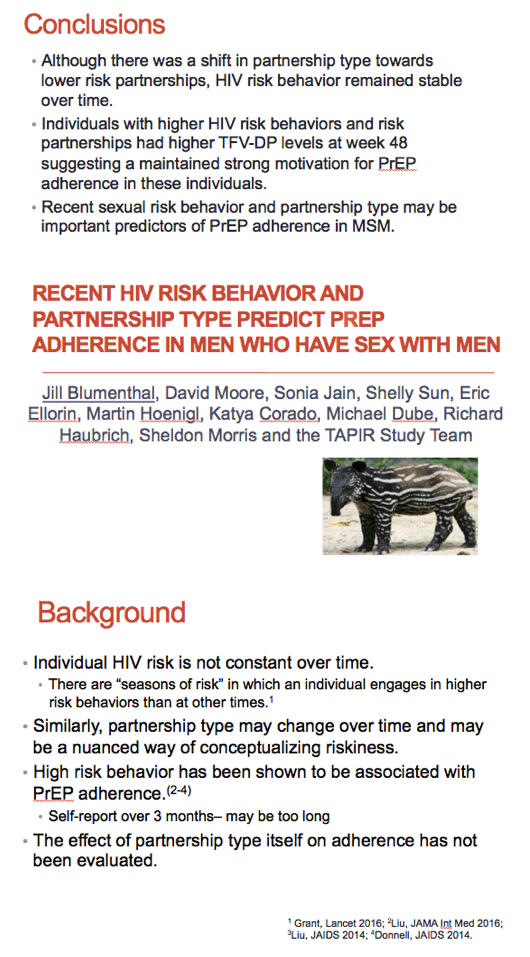
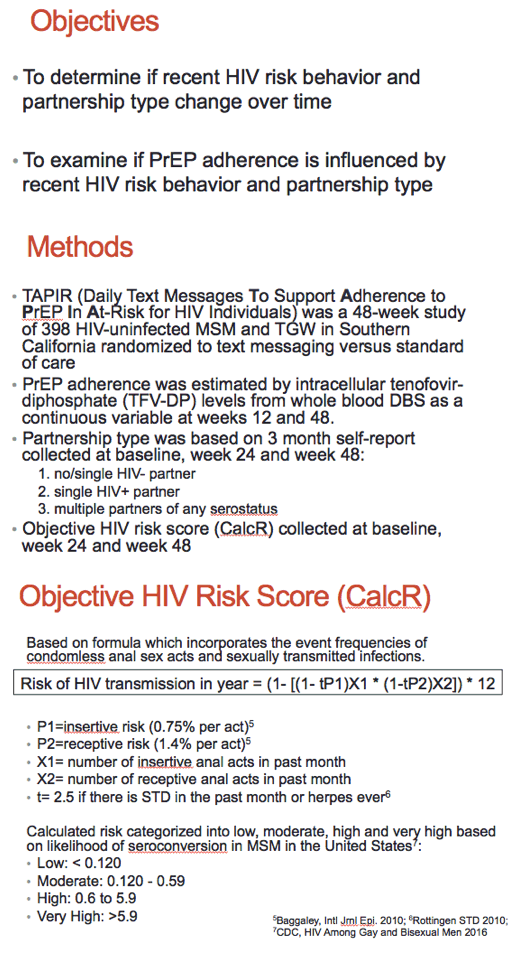
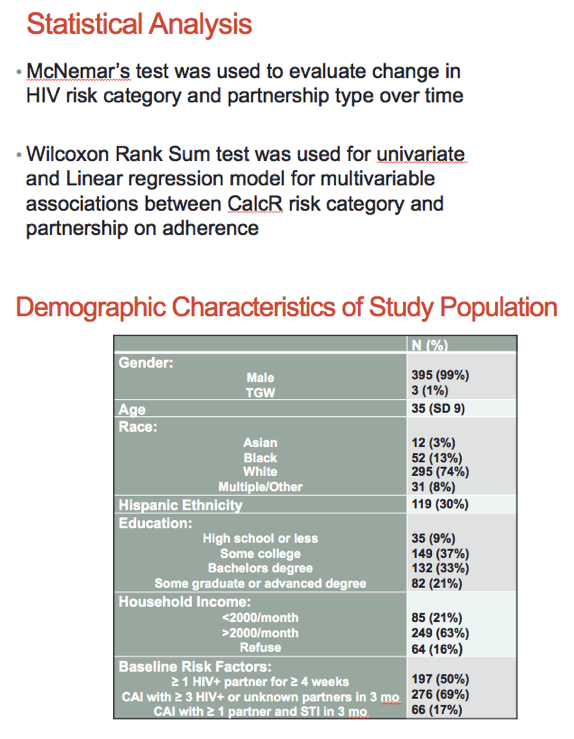
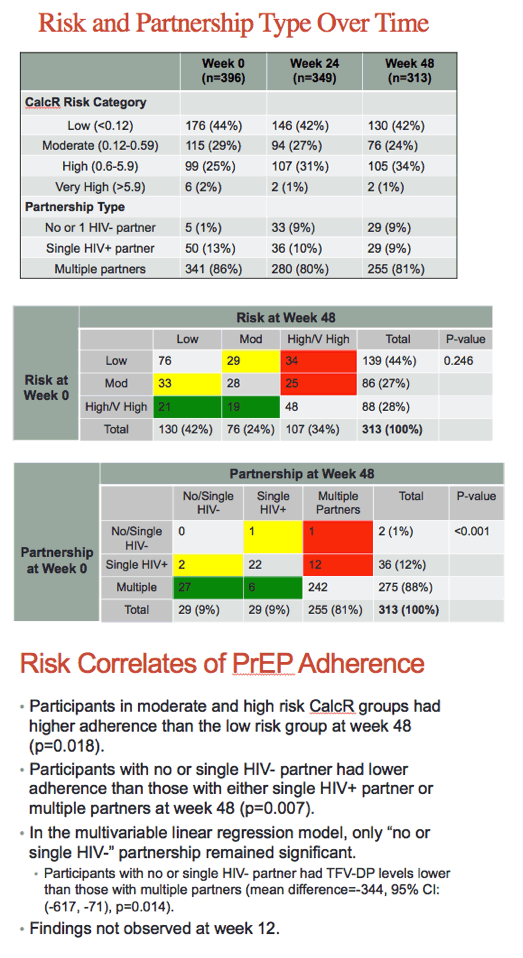
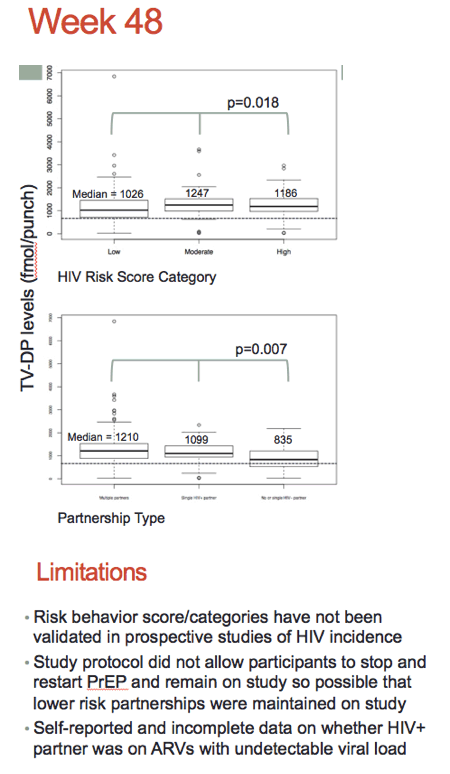
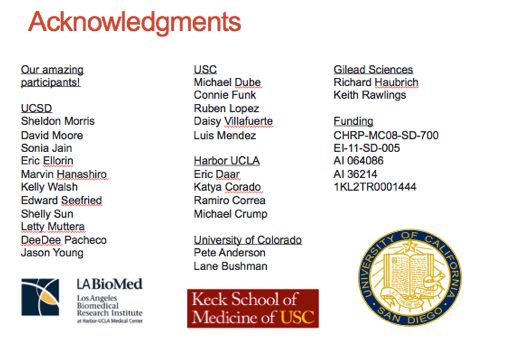
|
| |
|
 |
 |
|
|